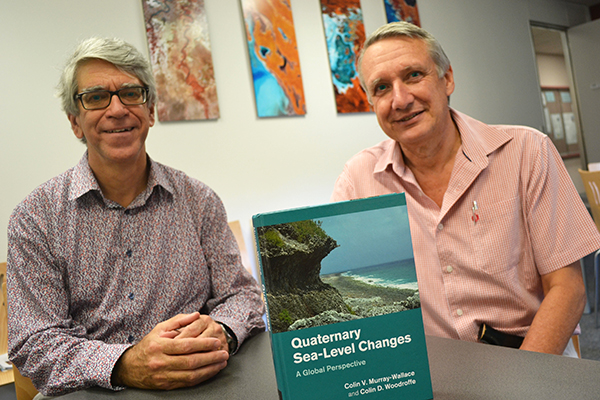March 13, 2014
Professors consolidate research on sea-level trends around the globe
Two UOW experts have published a comprehensive summary and review of the history of research into sea-level changes, a phenomenon that is increasingly a cause for concern among coastal inhabitants.
The book, , penned by geologist and coastal geomorphologist Professor Colin Woodroffe, examines methods used to document and analyse historical sea-level changes around the globe as well as the causes of sea-level changes.
Written specifically as a resource for academics, researchers and students, the book covers everything from sea-level changes in the Quaternary Period to the Last Glacial Maximum, and the changes in sea-level that have occurred since the melting of the ice sheets following the Last Glacial Maximum. Appropriately, the book concludes with a discussion about current and future sea-level changes.
The book summarises a vast collection of literature on sea-level changes over the past two million years.
"At times the literature is seemingly very contradictory and I felt that some form of overview that unravelled this complexity would be useful, especially as the topic is relevant to a wide range of academic disciplines," Professor Murray-Wallace said.
The knowledge derived from an understanding of past sea-level changes allows geologists to understand the evolution of coastal regions through time and even model early human migration patterns.
"A surprisingly diverse array of environmental changes are initiated by sea-level changes,” Professor Murray-Wallace, from the School of Earth and Environmental Sciences, said.
“As the sea-level rises, coastal landscapes shift landward. As sea-levels fall, the continental shelves are exposed as dry land. Only 21,000 years ago, continental Australia was up to 25 per cent larger in land area than today due to the exposed continental shelves. This had the effect of intensifying the ongoing trend of increased aridity, which in turn affected human settlement patterns and the spatial distribution of plant taxa. At times of the lowest sea level during glaciations, land bridges enabled early humans and animals to migrate to other provinces.
“The study of sea-level changes illustrates that nothing remains static in nature – the one thing that is constant in the environment is change."
Information about sea-level changes also informs predictions about future sea-level changes.
"It is clear that the sea-level will continue to rise in the foreseeable future and a range of estimates have been suggested, perhaps the more realistic being in the order of 0.8 metre by 2100. It is important to remember, however, that different coastlines will respond differently owing to long-term trends in the behaviour of the Earth’s crust. The Scandinavian countries for example will experience a relative sea-level fall during this period due to ongoing uplift associated with the complete withdrawal of the late Pleistocene ice sheets,” Professor Murray-Wallace said.
